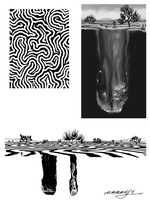Questioner
We have a lot of fan theories about your work, and most of them are wrong by necessity.
Brandon Sanderson
...That is true.
Questioner
Are there things that are sort of directly designed to encourage or dissuade certain theories?
Brandon Sanderson
...As a member of Wheel of Time fandom growing up, I have experience on both sides of this now. And I decided after-- and this was partially looking at Robert Jordan's notes, looking at how he approached it, how it worked, being a fan-- I decided that that direction lies madness. Trying to stay ahead of the fans, trying-- if you try to twist so much that the fans can't guess, then that just means your foreshadowing is not going to work. On the other hand, doing too many in-jokes and things like this, it risks just making your book uninteresting, or not long-lasting.
And so while I read a lot of fan theories, and I even take them on occasion-- like Shardfork? That was totally a fan thing. Someone suggested that, I'm like, "Yeah, that would totally happen." But I kinda have to approach it from the frame of mind of "What would the characters do?" And I try not to actively write things that dissuade or encourage certain theories, I try to write what is best for the story. And let the fans then-- if they're going to guess, they're going to guess. If my foreshadowing is good, they probably are going to guess. At the same time, I know how insane they all are, 'cause I'm one of them, and I know they're just gonna go off on weird tangents. And that's just fine too.
So, it's this weird balance where I try to be part of the fandom, but make sure not being overly influenced by the fandom, and Wheel of Time gave me a lot of good practice on this. One of the things I really worried about with Wheel of Time was that the book would become a sequence of in-jokes for people who had read the series before. And yet, at the same time, as a fan, there were certain things I really wanted to see happen. I wanted to see certain characters meet up again after a long time apart, and I had been waiting for that for, like, a decade, and I was gonna make that happen, right? And I had to balance those two things, and that's just what I do with my books, even still.

